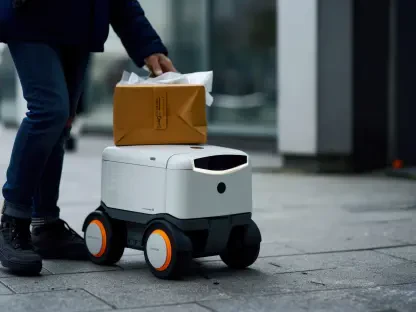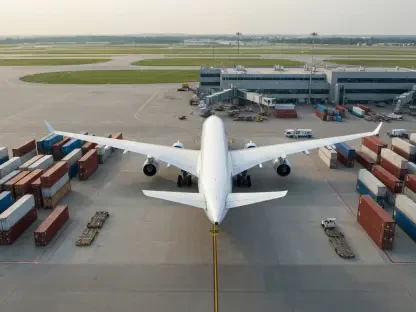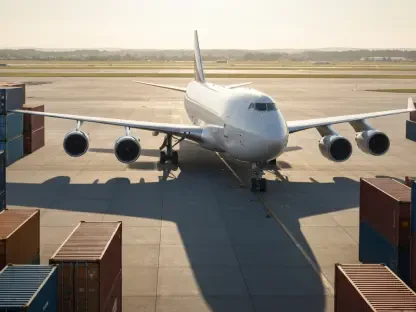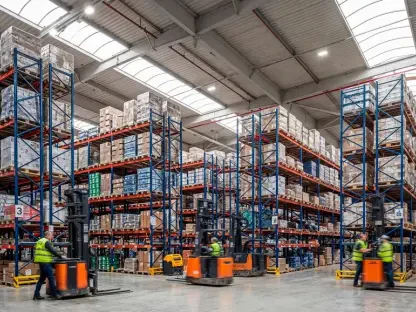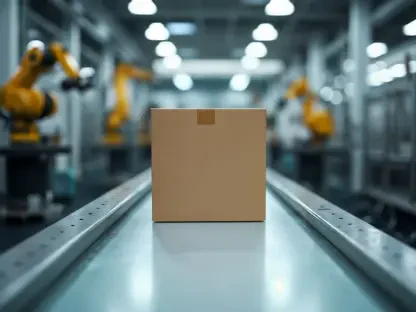As the logistics and supply chain industry advances, the integration of robotic systems into warehouse operations has become increasingly significant. This pivotal shift revolves around meeting the demands of efficiency, safety, and adaptability. The implementation of robotic automation is transforming traditional warehouse tasks, propelling the industry into a more streamlined and technologically driven era. Notably, Randa Apparel & Accessories (RAA) has demonstrated an innovative approach by deploying advanced robotic technology to address inherent challenges in warehouse operations. This analysis elaborates on robotic systems’ features, performance metrics, and their real-world impact on existing practices.
Technological Evolution and Core Components
The embrace of robotic warehouse automation represents a significant technological evolution, marked by the capability of robots to perform tasks with precision and speed. These systems are increasingly recognized for their ability to autonomously navigate warehouses, effectively dealing with spatial challenges and optimizing routes without human intervention. Central to their operation is a sophisticated suite of sensors and algorithms that ensure seamless interaction with the warehouse environment. This aspect is crucial in enabling these robots to replace labor-intensive human activities, thus enhancing operational throughput.
Key components such as autonomous navigation systems are pivotal in the success of robotic warehouse automation. These machines employ advanced computer vision and machine learning to navigate and adapt to their surroundings. For instance, at Randa Apparel & Accessories, the Pickle Robot is equipped with such systems, allowing it to maneuver through cluttered spaces effectively. This autonomous capacity elevates the efficiency of warehouse operations, mitigating human error and minimizing the potential for accidents, thereby providing a safer working environment.
Another notable feature is the intelligent picking mechanism housed within these robots. This component is essential for the accurate and rapid selection of goods in a warehouse setting. By incorporating generative AI, these systems can identify, select, and handle items of various shapes and sizes. This innovation signifies a considerable leap in automating one of the most tedious warehouse processes—item picking—enhancing both speed and accuracy while substantially reducing labor costs and human error.
Cutting-Edge Developments
Recent developments in robotic warehouse systems include the refinement of sensors and machine learning algorithms, which have improved operational efficiency and adaptability. As technology continues to evolve, innovations such as enhanced object recognition and predictive learning capabilities are emerging. These enhancements not only streamline operations but also allow robots to learn and adapt over time, continually improving their performance to meet the dynamic needs of warehouse environments. With demand for quicker fulfillment rising, such advancements are crucial in maintaining competitive advantage and addressing industry challenges.
The integration of generative AI into robotic systems signifies another noteworthy trend in warehouse automation. This technology enables robots to make decisions based on real-time data, optimizing the handling of diverse items and adapting to new scenarios. This flexibility in operations is especially significant for companies like Randa, which manage a vast array of products requiring efficient categorization and distribution. Such advancements underscore a shift toward increasingly autonomous systems capable of managing complex tasks with minimal human oversight.
Practical Applications and Real-World Impact
Robotic automation in warehouses has found practical applications across various sectors, transforming industries including fashion, e-commerce, and food distribution. At the forefront, Randa Apparel & Accessories has exemplified the use of such technology to revolutionize their operations. By equipping their Fort Worth fulfillment center with advanced robots, Randa addressed the labor-intensive task of unloading shipping containers. This deployment dramatically enhanced operational efficiency, allowing the workforce to focus on more strategic tasks and improving overall working conditions.
In this real-world setting, the Pickle Robot stands out through its successful unloading of approximately 1.5 million pounds of apparel within a few months. This achievement serves as a testament to the robot’s high functionality and resilience, even in challenging environments characterized by extreme temperatures. The introduction of such technology not only enabled Randa to maintain a competitive edge but also exemplified a significant shift toward integrated, employee-friendly technological solutions within the industry.
Challenges and Mitigation Strategies
Despite the promising benefits, robotic warehouse automation does not come without challenges. Technical hurdles, such as optimizing algorithms for varied task environments, are significant considerations in maximizing the effectiveness of these systems. Additionally, regulatory frameworks are still evolving to address the implications of widespread robotic adoption in workspaces. Consequently, companies must navigate a complex landscape of compliance while also addressing internal challenges related to integrating these new technologies with existing systems.
Efforts to mitigate these challenges include continuous advancements in technology to improve adaptability and performance. Research and development are ongoing to refine the capabilities of sensors and AI components, ensuring they can meet diverse operational demands. Furthermore, partnerships between technology companies and industry leaders are essential in creating tailored solutions that address specific needs, ultimately overcoming barriers to adoption and promoting a seamless transition to automated systems.
Future Developments and Considerations
The future of robotic warehouse automation appears promising, with ongoing advancements likely to enhance current capabilities even further. Anticipated developments include broader adoption of AI-driven decision-making processes and the integration of more sophisticated robotic systems into everyday operations. This evolution promises to redefine warehouse environments by enabling faster, more efficient, and safer logistics processes. Additionally, the potential for collaborative robots that work alongside human employees is becoming increasingly viable, blending the strengths of human intuition with robotic precision.
Long-term considerations involve assessing the societal and economic impacts of these technologies. While automation can significantly enhance productivity and safety, it also precipitates a need for workforce reskilling as traditional roles evolve. Companies must invest in training programs to ensure their workforce remains relevant and competitive in an increasingly automated world. Ultimately, the continued development and integration of robotic automation are set to transform logistics and supply chain operations, reshaping industries and creating new possibilities.
Reflection on the Impact
In conclusion, robotic warehouse automation has undeniably transformed the logistics and supply chain industry, offering innovative solutions to long-standing challenges. The practical applications and positive impacts are illustrated vividly through Randa Apparel & Accessories’ pioneering efforts in this domain. The technology enhanced warehouse operations and improved working conditions, showcasing an ideal blend of efficiency and human-robot collaboration. The future development of these systems holds significant promise, with continued advancements likely to further streamline supply chain operations and redefine industry standards on a global scale.



